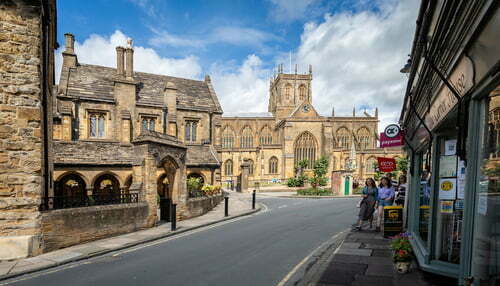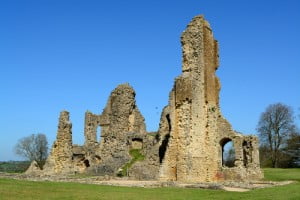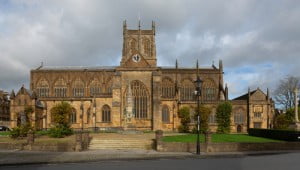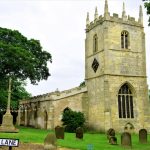
Sherborne in Brief
Sherborne is a market town and civil parish in northwest Dorset in the south of England. It is situated at the edge of the Blackmore Vale on the River Yeo. The town is located 6 miles (10 km) east of Yeovil and 35 miles (5 km) south of Bristol. Sherborne is probably best known for its many historic buildings. These famously include its ancient Abbey, renowned independent schools, and two castles. The current population of Sherborne is around 12,000.
A Fleeting History
A Saxon Heritage
The name Sherborne is derived from the Old English moniker of “scir burne’’, meaning “the place of the clear stream”. In AD 705, the great Diocese of Winchester was divided in two to create the parish of Sherborne. King Ine then founded Sherborne Abbey and appointed St Aldhelm as its first Bishop. The Saxons went on to make Sherborne the capital of the Kingdom of Wessex. In the 9th century, two former Kings of Wessex and the elder brothers of Alfred the Great, were buried at Sherborne Abbey. Namely, King Æthelbald, who ruled from 855 until 860, and King Æthelberht, who reigned from 860 to 865. In 933, King Æthelstan granted land at Sherborne to the nuns of Shaftesbury Abbey.
Norman to Tudor Times
In 1075, the bishop’s seat was moved to Old Sarum (Salisbury), which saw Sherborne’s church convert to a Benedictine monastery. In the 12th century Roger de Caen, then Bishop of Salisbury and Chancellor of England built a fortified palace at Sherborne. In 1227, Sherborne was awarded borough status. By the late Medieval period the production of wool and linen was the town’s main industry.

The 12th-century Sherborne ‘Old’ Castle. Image credit: Alexa Zari/Shutterstock.com
In 1437, a long-running conflict between Sherborne’s townsfolk and the monastery came to a head. The monastery was set on fire during the disturbance. However, much of the Norman structure survived and still stands today. Following the Dissolution of the Monasteries in 1539, the monastery buildings were bought by the Knight of the Shire, Sir John Horsey. He bribed Thomas Cromwell, 1st Earl of Essex to appoint the John Barnstable as the new Abbot of Sherborne Abbey. This enabled Horsey to buy up the church’s local assets at a knock-down price. The buildings were sold on to the local vicar and townsfolk and became the parish church.
In 1550, King Edward’s School was founded, which saw it take over some of the former abbey buildings. It later became Sherborne Boys School and became recognised as one of England’s great public educational establishments. It still uses the monastic buildings attached to the Abbey. In 1594, Sir Walter Raleigh bought Sherborne’s 12th-century castle. However, the feat of converting it to a fine country residence ultimately proved too challenging and costly. Raleigh abandoned the project and ended up building a new ‘palace’ a short distance away. The deserted medieval structure fell into ruin and became known as the ‘Old’ castle.
17th to 19th Centuries
In 1645, Royalists briefly set up a stronghold at the Old Castle during the English Civil War. However, a Parliamentary force led by Sir Thomas Fairfax took the castle for the government within 2 weeks. Parliament decided to ‘spoil’ the castle to prevent the possibility of it being used again in the future. Thus, its defensive walls were torn down.
The 17th, 18th, and 19th centuries were mainly responsible for the eclectic mix of residential and commercial property within Sherborne’s town centre. In the early part of the 19th century the production of silk became the mainstay of Sherborne’s economy. By the mid-19th century, the town population was more than 5,000. Around 1923, the town got gaslighting.
In 1860, the railway station was opened by the Salisbury and Yeovil Railway (S&YR). Though the company was responsible for extending the line from Gillingham to Sherborne it never actually operated any trains. They were provided by the London and South Western Railway, which bought out S&YR in 1878.
The Modern Era
Sherborne is the main business and market hub for the wider northwest Dorset area. The service sector and light industry make up the majority of the economy. However, the retail sector also makes up a fair slice of the town’s commerce. This has seen the town centre retained many small retail and bespoke businesses, especially for handicraft, art, and antiques. The indoor Pannier Market takes place at ‘The Parade’ every Thursday and Saturday. There’s also a farmers’ market on the 3rd Friday of the month at Cheap Street, between 9 am-1 pm.
Sherborne hosts a number of events and festivals during the course of the year. One of the biggest is the 3-day Sherborne Abbey Festival, which takes place on the last weekend in September. It’s a local celebration of music and the performing arts. The ancient Pack Monday Fair is another major occasion in Sherborne, taking place in early October. Originally an agricultural fair, the 4-day event is now centred around market retail, music, and other entertainment.
Sherborne is famed for its historic architecture and boasts a total of 401 listed-buildings. Of these, there is 14 Grade I listed, and 21 Grade II* listed.
Getting to Sherborne
It’s relatively easy to get to Sherborne by car as it’s conveniently situated on the A30 between Shaftesbury and Yeovil. However, most drivers will probably find it easiest to access the town, via the B3145, from the A303 at Wincanton.
South West trains operate an hourly service from London Waterloo to Sherborne. The journey usually takes around 2 hours 15 mins. There is also a regular service from Exeter which takes just over an hour.
The nearest airports to Sherborne are Bournemouth (BOH) 32 miles away, and Bristol (BRS) 42 miles away.
Did you Know?
- The ghost of Sir Walter Raleigh is said to haunt the grounds of Sherborne Castle on the eve of St Michael’s Day (29th September).
- Alan Turing was a pupil at Sherborne School between 1926 and 1931. The mathematician, computer scientist, and cryptanalyst is perhaps most famed for helping to break Germany’s ‘Enigma’ code during WW2.
Sport in Sherborne
Sherborne Town FC currently plays its football in the Western League Division One. They play home games at Raleigh Grove, which has a current capacity of 1,150.
Sherborne RFC’s first team currently plays in South West Division 1 East, the sixth level of the English rugby union system. Nicknamed the Dorset All Blacks, they play home games at Gainsborough Park.
Sherborne also has a well-established cricket club, golf club, and cycling club.
Things to do in Sherborne
Play Golf
Sherborne is a mature 18-hole golf course that has spectacular views over Blackmore Vale and Glastonbury Tor. The club welcomes visitors of all levels of golfing prowess, including beginners.
Take a Hike
There are lots of local walks around Sherborne, including those around the Old Castle and Abbey. If you are up for something more challenging, the Macmillan Way long distance trail runs right through Sherborne.
Things to see in Sherborne
Two Castles
Sherborne Castle & Gardens was built by Sir Walter Raleigh in 1594. It’s been the home of the locally influential Digby family since 1617. The house is one of the country’s best examples of Elizabethan architecture. It also houses an important national collection of historic furniture and fine arts of the period. The spectacular gardens were designed by famed 19th-century landscape artist Capability Brown on one of his first commissions.
Sherborne’s Old Castle was originally a 12th century fortified bishop’s palace. It was famously leased to Sir Walter Raleigh during the 16th century. It later became a powerful Royalist base during the English Civil War. The ruined castle is now home to a great variety of plants and wildlife. Its idyllic setting makes it a popular spot for both walkers and picnickers.
A Museum and Abbey
Sherborne Museum houses a decent collection of local artefacts bringing to life the area’s history. Manned by volunteers, it’s open to the public on Saturdays from 10.30 am until 4.30 pm, from April to December.
Sherborne Abbey, also known as the Abbey Church of St. Mary the Virgin, was originally a Saxon cathedral. The ancient Abbey is steeped in history, as it was founded in AD 705 by the ‘King Ine’ of Wessex. Between 998 and 1539, it was a Benedictine abbey church, and since 1539, it’s been a Church of England parish church.

Sherborne Abbey. Image credit: Christopher Hotten/ Shutterstock.com
Some Good Manors
The 15th-century Purse Caundle Manor is a Grade II listed building located in the village of Purse Caundle, about 4 miles east of Sherborne. The privately owned country mansion retains much of its original character and fittings. It also displays a host of period artefacts. It’s open to the public but you will need to pre-book.
Sandford Orcas Manor House is a former Tudor palace. The hamstone manor house is about 4 miles north of Sherborne. The house has an authentic interior and a gatehouse. There are terraced gardens, topiary and an herb garden. Pre-booked guided tours are obligatory.
Where to stay?
Sherborne and the immediate surrounding area offer a wide range of accommodation choices. Thus, you should be able to find something to suit your taste and budget. At the top end, there’s a selection of luxury hotels. However, if you’re looking for a budget stay then there are also plenty of camping and caravan options. There are also lots of decent guesthouses, B & B’s, inns, self-catering cottages, etc.
Moving to Sherborne?
Properties in Sherborne have sold for an average price of approximately £350,000 over the last year (Sep 2021). The best selling houses were detached properties, which sold for an average price of £465,000. Terraced properties sold for an average of £335,400, semi-detached properties fetched £322,600, and flats around £168,000. Overall, the average sold price of a property in Sherborne over the last year was 10% up on the previous year.
Thinking of a Staycation?
Are you thinking of holidaying in the UK sometime soon? If so, why not check out some of our other travel guides for some staycation ideas. I think you’ll be surprised at the variety of great things to do in the UK’s fairly green and mostly pleasant land.
Header image credit: Nigel Jarvis/Shutterstock.com



